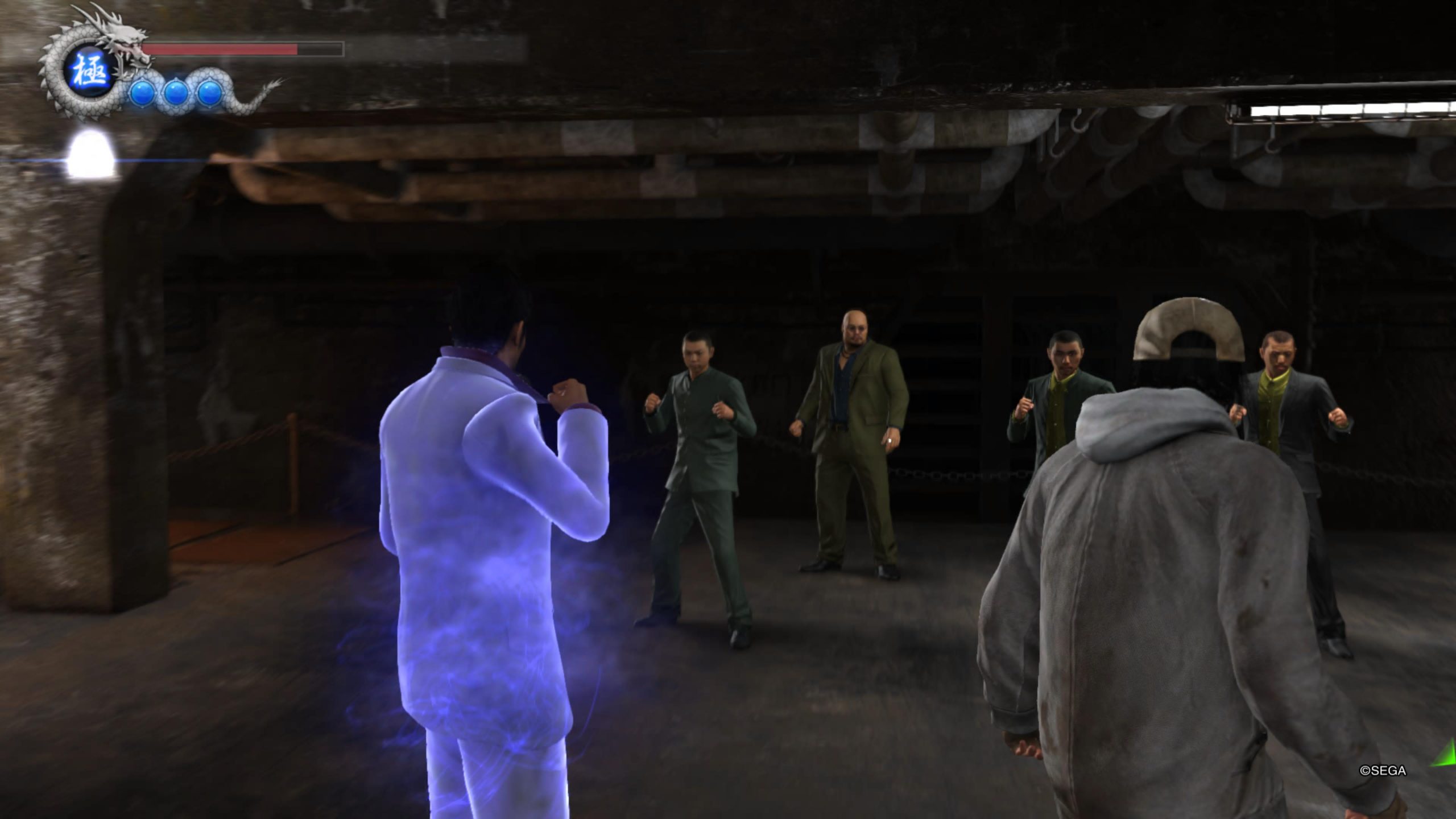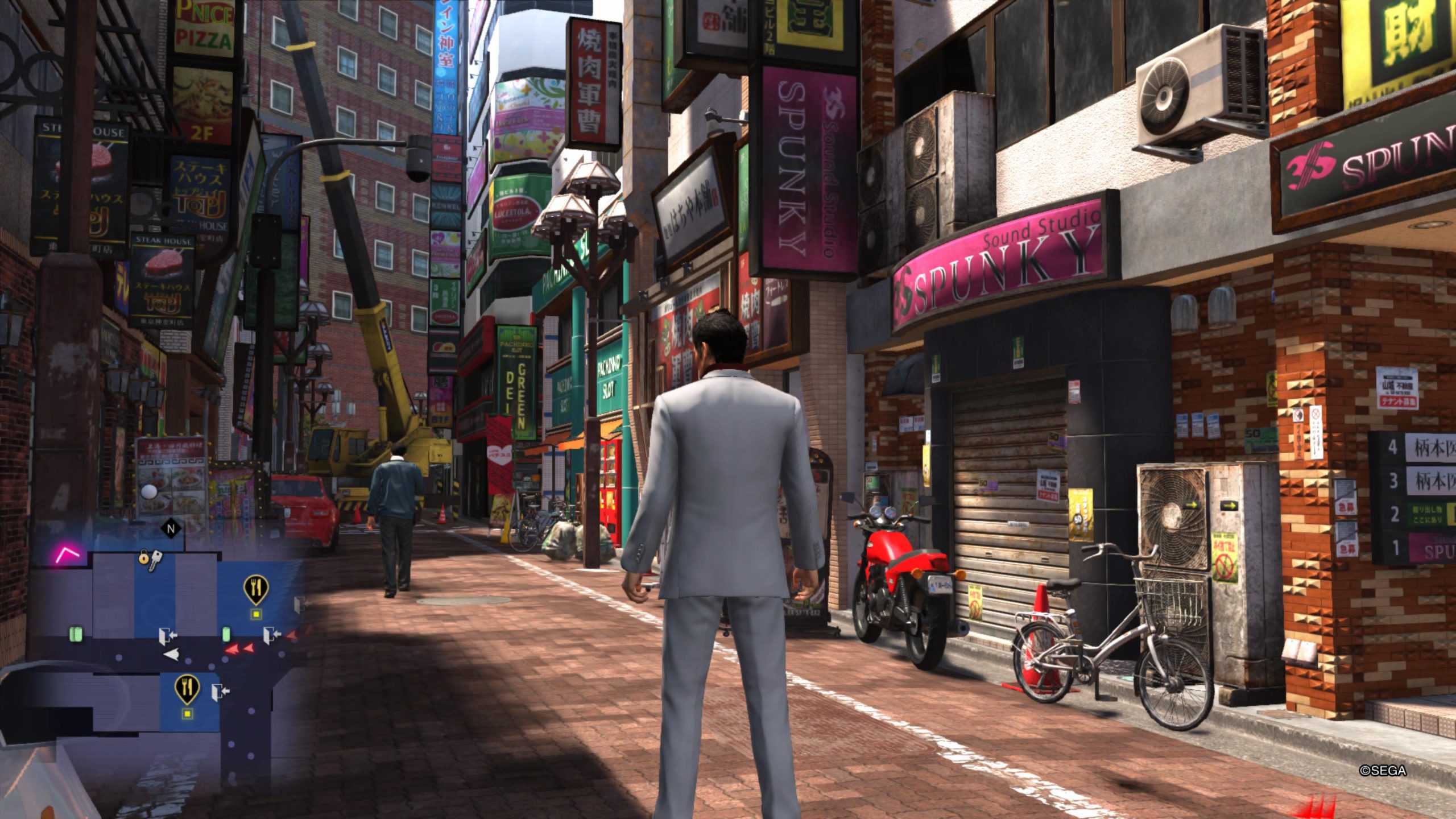And so, the Kazuma Kiryu saga is over. That’s it. Done. Well, until they decide to make another one which I’m 100% certain they will at some point.
Yakuza 6 isn’t a radical departure from the series, nor is it the pinnacle, but it is more melancholy, more complicated, and more based in seeming realism than previously. The story is very important, what with it being the last episode, so I dare not spoil it for you, but it involves Kiryu going to prison (again) for his part in the events of Yakuza 5, during which time Haruka vanishes only to reappear just as Kiryu finishes his sentence and is then coincidentally (or not) hit by a car and hospitalised. Oh yeah, and she has a baby, which The Dragon of Dojima decides to look after while Haruka lies comatose – meaning for several hours of play you have a baby to carry round everywhere too.
The first half of the game is mostly about Kiryu trying to track down both where Haruka has been for the last three years, and who – and then where – the father of the child is. With some of that resolved, Yakuza 6 returns to more Yakuza’y traditions, with gangsters and rival clans and Triads and the Korean Mafia and some off-track vigilantes all getting involved in the story, and it transpires that Haruka’s accident was much more central to the all out war in Kamurocho than it seemed at first.

As usual, there are twists that would make a Chubby Checker sweat: allegiance swapping, surprise reveals, backstabbing, spying, double-crossing and lots of fake respect. As agendas are revealed the plot gets more complicated, not less, and it isn’t until the final chapter than things finally start making sense. If there’s anything Ryu Ga Gotoku can do, it’s tell a gripping yarn.
And, interwoven is the regular series nonsense – arcades, side quests, bizarre events and even more bizarre characters. In the more rural Onomichi region of Hiroshima, where Kiryu spends half of the game, you come across references to a number of Studio Ghibli films – a boy and a girl swapping bodies when they fall down some stairs, and a girl who claims to have leapt through time, for example. Onomichi reminded me a bit of Okinawa from Yakuza 3, and combined with the local Yakuza family – who are key to the story – it feels a little like a re-tread of that game. Even one of the voice actors appears as characters in both.

Visually, it’s the most stunning Yakuza game to date. It’s running the same engine as Kiwami 2 and that looked incredible too, but having new locations helps even more here, I think. Playing it on a PS5 meant loading times hardly existed, which was much appreciated.
There isn’t much else I can say which doesn’t also apply to the other games in the series too, or that would ruin the excellent story here. As I said, it’s not my favourite Yakuza game (I think that might be Zero?), but it’s still absolutely fantastic. The surprises and the wait for the end reveal kept me hooked all the way through, and the gameplay is solid, the fighting meaty and enjoyable, and the nonsense turned up just enough. The characters in Yakuza games are some of the most well written, fleshed out and acted in the media, and that’s no different here. I particularly liked the unexpected appearance of Beat Takeshi, and his character arc.
Most importantly, if you’ve any affinity for Yakuza games, you absolutely must play this game. Or you could watch my playthough below, although that won’t tell you everything as Sega like to block the recording of the final chapters of Yakuza games…

